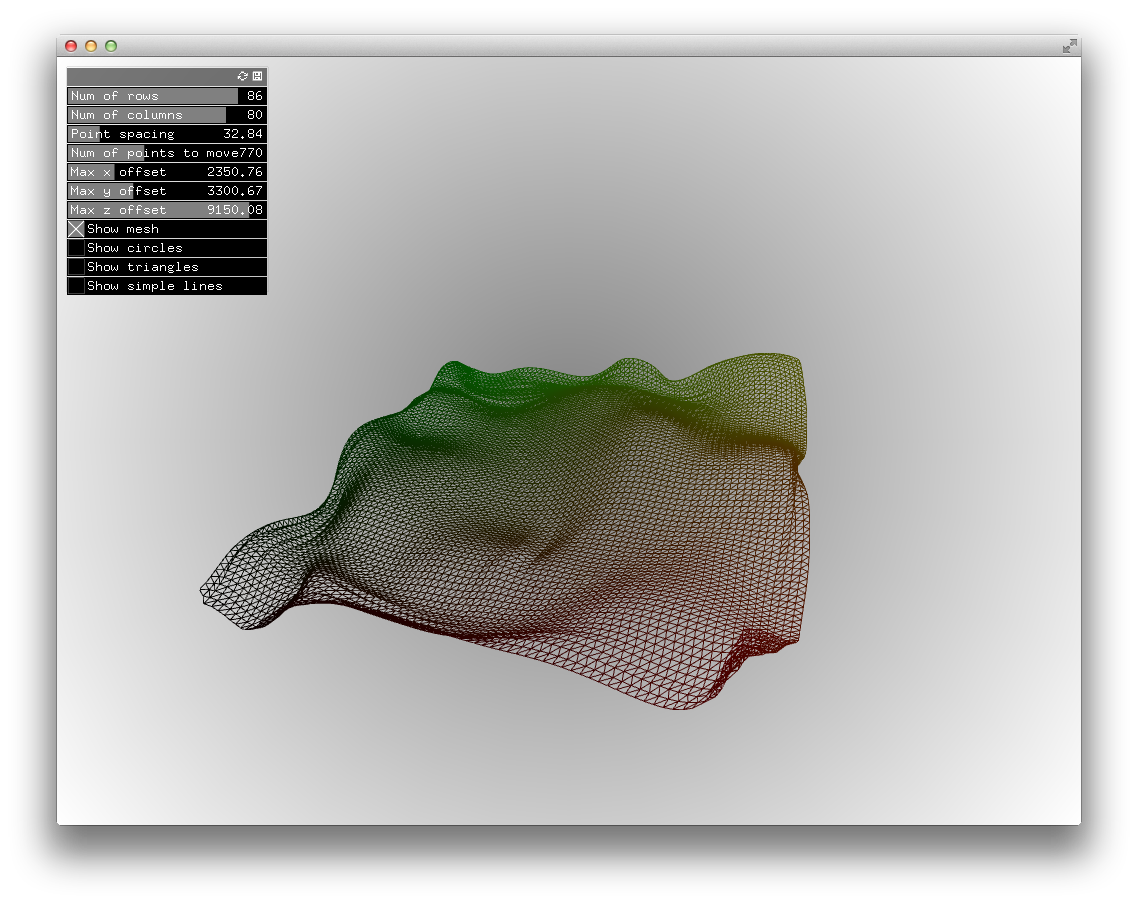Move a grid with Jakobsen algorithm
One has the possibility to simply draw own versions of the current state of the object.
Here's how to do it:
Create a class that extends GridDisplay:
#include <stdio.h>
#include "GridDisplay.h"
class Circles_GridDisplay : public GridDisplay { // make a public extension
private:
public:
Circles_GridDisplay():GridDisplay() {}; // don't forget to add a standard constructor which calls parent constructor
void setup(); // REQUIRED
void update(); // REQUIRED
void draw(); // REQUIRED
};The class needs to declare and define the functions setup, update and draw.
- setup gets called after a grid has been initially set up, i.e. all points have been created and their positions set initially.
- update gets called after each update iteration of the grid, that is, when the points start to attract/reject other point masses.
- draw is the function which should handle all drawing stuff and gets called in the app's
draw-method.
A class that is derived from GridDisplay has access to several private members:
Grid* grid: Pointer to the current grid. Normally one only needs access to the position of the point masses. A point mass at a specified (x,y)-position (where x is number of row, y number of column) can be accessed viagrid->pointMassAt(x,y). This returns a copy of thePointMassat the position (so the original grid cannot be altered). To get the position (returnsofVec3f) of such a point mass, callgrid->pointMassAt(x,y).getPosition()int gridWidth: The number of rows of the current gridint gridHeight: The number of columns of the current gridfloat gridPointDistance: This defines the distance a point mass has to its left,right,upper,lower neighbor.
Example (in e.g. Circles_GridDisplay.cpp):
#include "Circles_GridDisplay.h"
// we do not need to setup anything, as we don't need to keep track
void Circles_GridDisplay::setup() {
}
// same here -> no update
void Circles_GridDisplay::update() {
}
void Circles_GridDisplay::draw() {
ofClear(0,0,0,255);
ofSetColor(56,112,188);
ofFill();
float radius = gridPointDistance / 4;
// here we iterate over all points
for (int i=0; i<gridWidth; i++) {
for (int j=0; j<gridHeight; j++) {
PointMass p = grid->pointMassAt(i,j); // we get a copy of the point mass
ofDrawCircle(p.getPosition(), radius); // access the position and draw a circle at its place
}
}
}In ofApp.h, create a member which will hold an instance of your class, e.g.
Circles_GridDisplay circlesDisplay;In ofApp::setup, register the display in the following way right before setupShape:
// REGISTER GRID DISPLAYS HERE!
registerGridDisplay(&circlesDisplay, "circles"); // you need to pass the address of to the function!
// ---
setupShape();The second argument is a name, as each display automatically gets a check box to toggle the drawing.





